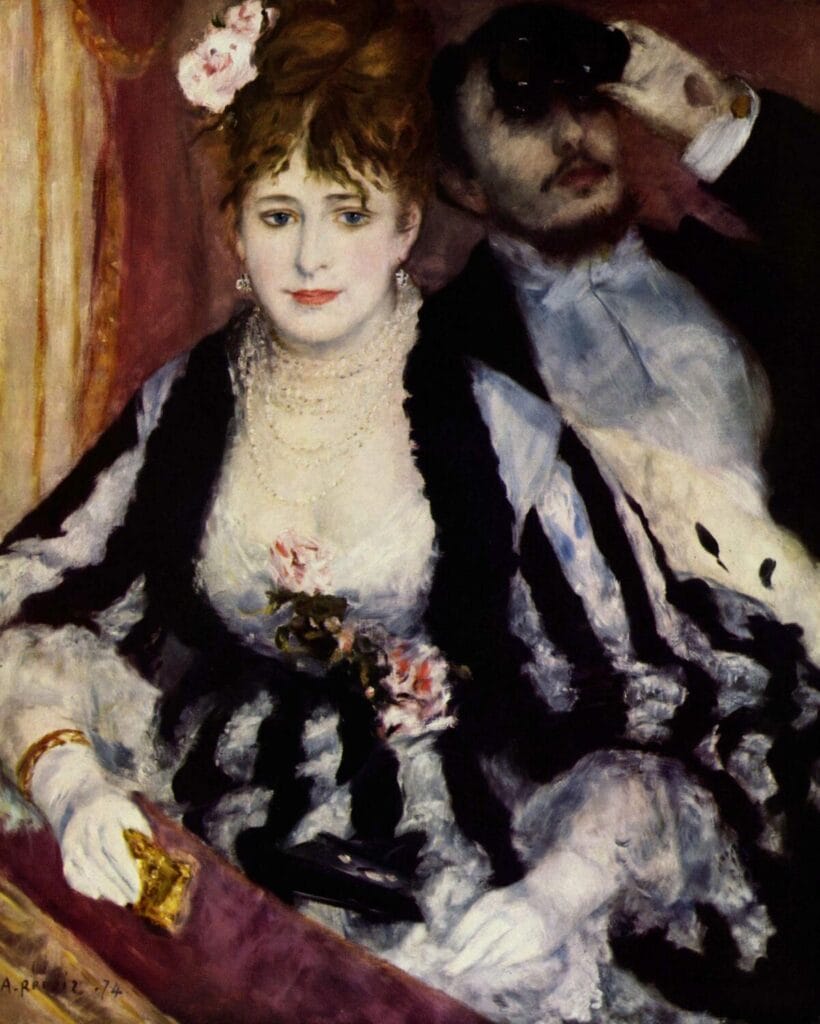Pierre-Auguste Renoir was a French artist and one of the leading figures of the Impressionist movement. Born in 1841 in Limoges, France, Renoir would go on to create some of the most iconic and beloved works of art in history. His paintings are characterized by their vibrant colors, fluid brushstrokes, and a fascination with light and its effects on the natural world. Throughout his career, Renoir would continue to explore and refine his unique style, leaving an indelible mark on the world of art.
In this article, we will take a closer look at the life and work of Pierre-Auguste Renoir. We will examine the origins of the Impressionist movement and how it influenced Renoir’s artistic development. We will also delve into the evolution of Renoir’s painting style, some of his most iconic masterpieces, and the techniques and themes that defined his work. Finally, we will discuss Renoir’s impact on modern art, where to see his famous works in museums and galleries, and the enduring legacy of this remarkable artist.

The Birth of Impressionism
The Impressionist movement was born in France in the late 19th century as a reaction against the rigid, formal style of painting that was popular at the time. Impressionism sought to capture the fleeting, transient nature of light and color, focusing on the sensory experience of the world. The movement was characterized by its loose brushwork, vivid colors, and emphasis on the effects of light on the landscape.
Impressionism was initially met with skepticism and even ridicule by the art establishment. The term “Impressionism” itself was coined by a critic who intended it as an insult, mocking the unfinished, sketch-like quality of the paintings. However, the movement soon gained momentum, with artists such as Claude Monet, Édouard Manet, and Pierre-Auguste Renoir leading the way. These artists would often work outdoors, painting en plein air to capture the fleeting effects of light and color in their work.

Renoir’s Early Life and Artistic Influences
Pierre-Auguste Renoir was born in 1841 in Limoges, a city in central France known for its thriving porcelain industry. His family moved to Paris when he was a young child, and it was in the bustling, bohemian capital that Renoir began his artistic journey. At the age of 13, he started an apprenticeship with a porcelain painter, where he honed his skills in the delicate art of painting on fine china.
Renoir’s early artistic influences were the 18th-century French masters, such as François Boucher and Jean-Honoré Fragonard. He admired their light-hearted, decorative style and their use of color to convey emotion. However, as Renoir began to develop his own unique style, he also became interested in the work of contemporary artists like Édouard Manet and Claude Monet. Their innovative approach to painting, particularly their focus on capturing the effects of light and color, would have a profound impact on Renoir’s work.
In 1862, Renoir entered the prestigious École des Beaux-Arts in Paris, where he studied under the guidance of Swiss painter Charles Gleyre. It was here that he met fellow artists Claude Monet, Alfred Sisley, and Frédéric Bazille, who would later become key figures in the Impressionist movement. The group would often paint together, sharing ideas and techniques that would shape the development of their individual styles.

The Evolution of Renoir’s Painting Style
Renoir’s painting style evolved throughout his career, reflecting his ongoing exploration of light, color, and form. In his early years, he was heavily influenced by the work of his contemporaries, particularly Claude Monet. His early paintings often featured outdoor scenes, with a focus on capturing the fleeting effects of light on the landscape.
As Renoir’s style developed, he began to pay more attention to the human figure, particularly the female form. He was fascinated by the way light played on the skin, and his paintings from this period are characterized by their luminous, glowing quality. Renoir’s skill in capturing the subtle nuances of color and light earned him the nickname “the painter of happiness.”
In the 1880s, Renoir’s style underwent a significant change. He became interested in the work of the Old Masters, particularly the Renaissance painters like Raphael and Titian. This led him to adopt a more classical approach to painting, with a greater emphasis on form and structure. This period, known as his “Ingres period,” is marked by a more restrained color palette and a return to a more formal, academic style.
However, by the early 1890s, Renoir had returned to his earlier, more spontaneous style of painting. He continued to explore the effects of light and color, producing a body of work that is celebrated for its vibrancy, warmth, and sensuality.

Iconic Renoir Masterpieces
Throughout his career, Pierre-Auguste Renoir created a number of iconic masterpieces that are celebrated for their beauty, technical skill, and innovative approach to painting. Some of his most famous works include:
- “La Loge” (1874): This painting depicts a fashionable couple seated in a theater box, with the woman leaning forward to observe the audience below. The play of light on the woman’s face and dress is a stunning example of Renoir’s skill in capturing the effects of light and color.
- “Dance at Le Moulin de la Galette” (1876): This lively scene of Parisians enjoying an afternoon dance in Montmartre is one of Renoir’s most beloved works. The vibrant colors, fluid brushstrokes, and sense of movement and energy make this painting a quintessential example of the Impressionist style.
- “Luncheon of the Boating Party” (1880-1881): This large-scale painting depicts a group of friends enjoying a leisurely lunch on a terrace overlooking the Seine. The composition is carefully balanced, with each figure carefully positioned to create a sense of harmony and unity. The play of light on the water, the foliage, and the various textures of the clothing showcases Renoir’s mastery of color and light.
Techniques and Themes in Renoir’s Artwork
Renoir’s artwork is characterized by its vibrant colors, fluid brushstrokes, and fascination with light and its effects on the natural world. Some of the key techniques and themes that can be found in his work include:
- Loose brushwork: Renoir’s paintings often feature loose, flowing brushstrokes that give his work a sense of spontaneity and movement. This approach allowed him to capture the fleeting effects of light and color in his scenes.
- Color: Renoir was known for his skill in capturing the subtle nuances of color in his work. He often used a limited color palette, focusing on the interplay of light and shade to create a sense of depth and form.
- Light: One of Renoir’s primary concerns as an artist was the exploration of light and its effects on the world around him. He was fascinated by the way light could transform a scene, and he sought to capture these fleeting, transient moments in his work.
- The human figure: Renoir was particularly interested in the human figure, and his paintings often feature groups of people engaged in everyday activities. He was especially drawn to the female form, and his depictions of women are celebrated for their sensuality and warmth.

Renoir’s Impact on Modern Art
Pierre-Auguste Renoir’s innovative approach to painting, along with his fellow Impressionists, had a profound impact on the development of modern art. The Impressionist movement paved the way for subsequent artistic movements, such as Post-Impressionism, Fauvism, and Abstract Expressionism, all of which sought to break free from the constraints of traditional artistic techniques and subject matter.
Renoir’s focus on the sensory experience of the world, his exploration of color and light, and his unique, fluid painting style continue to inspire artists today. His work has had a lasting impact on the world of art, and his paintings remain some of the most beloved and recognizable in history.
Visiting Renoir’s Famous Works in Museums and Galleries
Many of Pierre-Auguste Renoir’s most famous works can be found in museums and galleries around the world. Some of the best places to see his paintings include:
- The Musée d’Orsay in Paris, France: This museum houses an extensive collection of Impressionist and Post-Impressionist works, including several of Renoir’smasterpieces. Visitors can see iconic works such as “Dance at Le Moulin de la Galette” and “Luncheon of the Boating Party” up close and appreciate the vibrant colors and fluid brushstrokes that define Renoir’s style.
- The National Gallery of Art in Washington, D.C., USA: The National Gallery of Art is home to several of Renoir’s most famous works, including “The Luncheon of the Boating Party” and “Girl With a Watering Can.” Visitors can also see other Impressionist and Post-Impressionist works in the museum’s collection.
- The Barnes Foundation in Philadelphia, USA: The Barnes Foundation features an extensive collection of Impressionist and Post-Impressionist works, including several of Renoir’s paintings. Visitors can see works such as “The Large Bathers” and “The Artist’s Family” and explore the themes and techniques that define Renoir’s work.
- The Clark Art Institute in Williamstown, Massachusetts, USA: The Clark Art Institute is home to several of Renoir’s paintings, including “The Great Bathers” and “On the Terrace.” Visitors can also explore other Impressionist and Post-Impressionist works in the museum’s collection.

The Legacy of Pierre-Auguste Renoir
Pierre-Auguste Renoir’s legacy as an artist is a testament to the power of innovation, exploration, and creativity. His unique style, which combined a fascination with light and color with a fluid, spontaneous approach to painting, paved the way for future generations of artists. His paintings continue to inspire and delight viewers around the world, and his impact on the world of art remains as strong today as it was during his lifetime.
In conclusion, Pierre-Auguste Renoir was a remarkable artist who left an indelible mark on the world of art. His paintings are celebrated for their vibrancy, sensuality, and innovative approach to painting. Through his exploration of light and color, his fascination with the human figure, and his unique, fluid style, Renoir helped to shape the course of modern art. Visitors to museums and galleries around the world can still see his paintings today, and his legacy as an artist remains as strong as ever.









